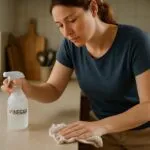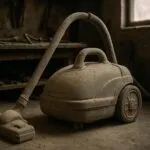A velvet couch instantly upgrades a living room, but spills tend to shout on that smooth fabric. If someone needs fast steps on How To Clean A Velvet Couch, this guide lays it out clearly. The goal is simple, keep the soft feel, lose the mess.
Parents often worry about juice drips, pet prints, and sticky snacks. Those are normal. With a few steady habits, velvet stays plush and bright without stress.
Weekly care matters. Light dusting and gentle vacuuming keep dirt from getting ground into the pile, the short, fuzzy surface of the fabric. Quick action after a spill can prevent a permanent mark.
This guide covers easy stain removal, odor control, and long-term furniture upkeep. Use these steps to protect soft furnishings and keep that couch looking new.
Preventative Measures: Always check the care label to identify your velvet type. Use fabric-specific cleaning solutions for optimal fabric maintenance. Routine inspections with gentle techniques boost household cleaning and preserve your home decor. Also, a good house cleaning routine makes everything more durable and clean.
Key Takeaways
- Vacuum weekly with a soft brush tool to lift dust and allergens without roughing up delicate fibers.
- Test every cleaner on a hidden spot first. Synthetic velvet resists stains better than cotton, while acetate, silk, and rayon usually need a pro.
- Blot spills right away with a microfiber cloth. Do not rub, it spreads the stain and crushes the pile.
- To deodorize, sprinkle baking soda, let it sit several hours or overnight, then vacuum thoroughly.
- Let the couch air dry completely after cleaning, then brush with the nap to restore the plush texture.
Preparing to Clean a Velvet Couch
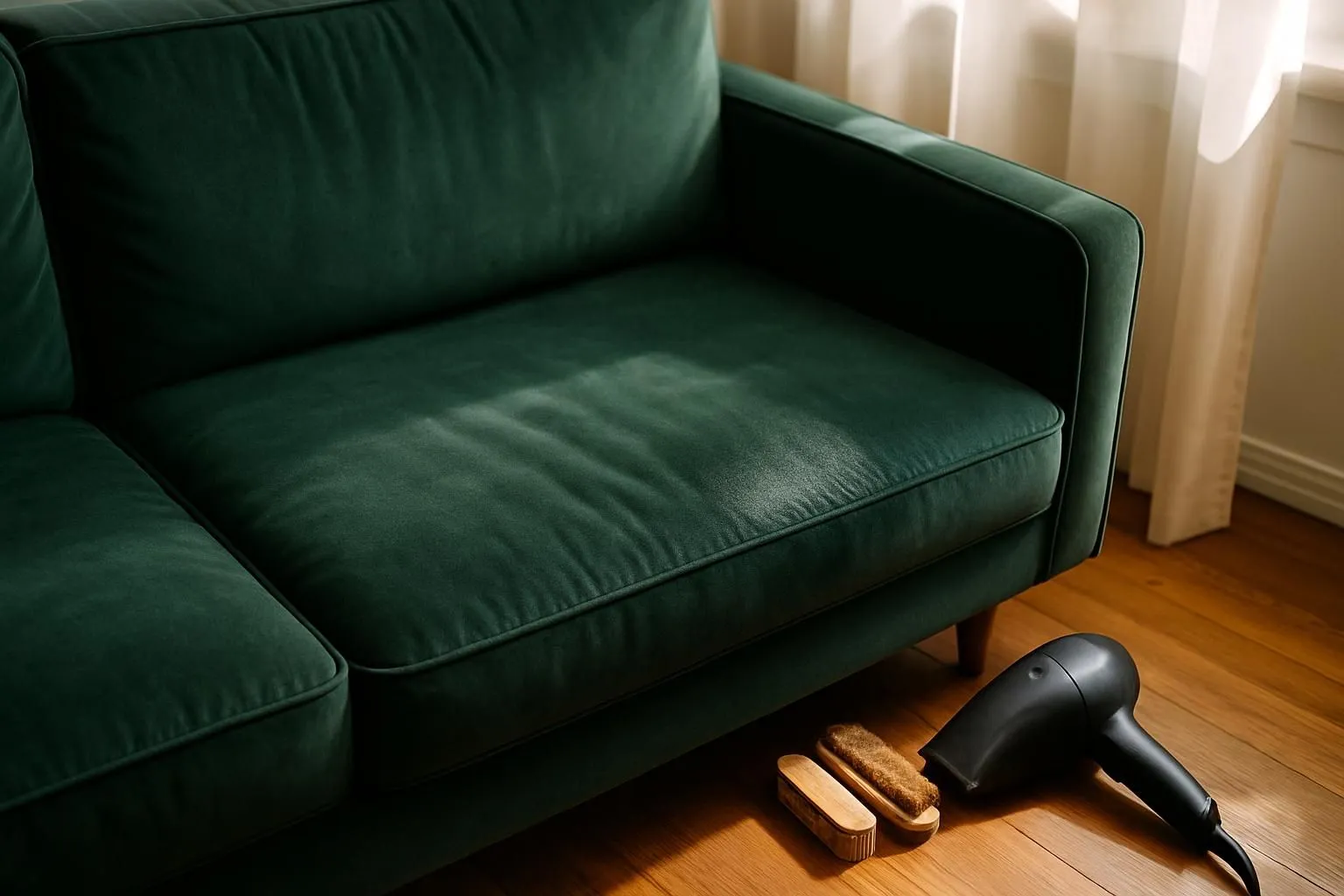
Gather gentle tools, then test any cleaner in a hidden area before tackling a stain. A few minutes of prep prevents color loss and water marks.
Gather necessary tools and materials
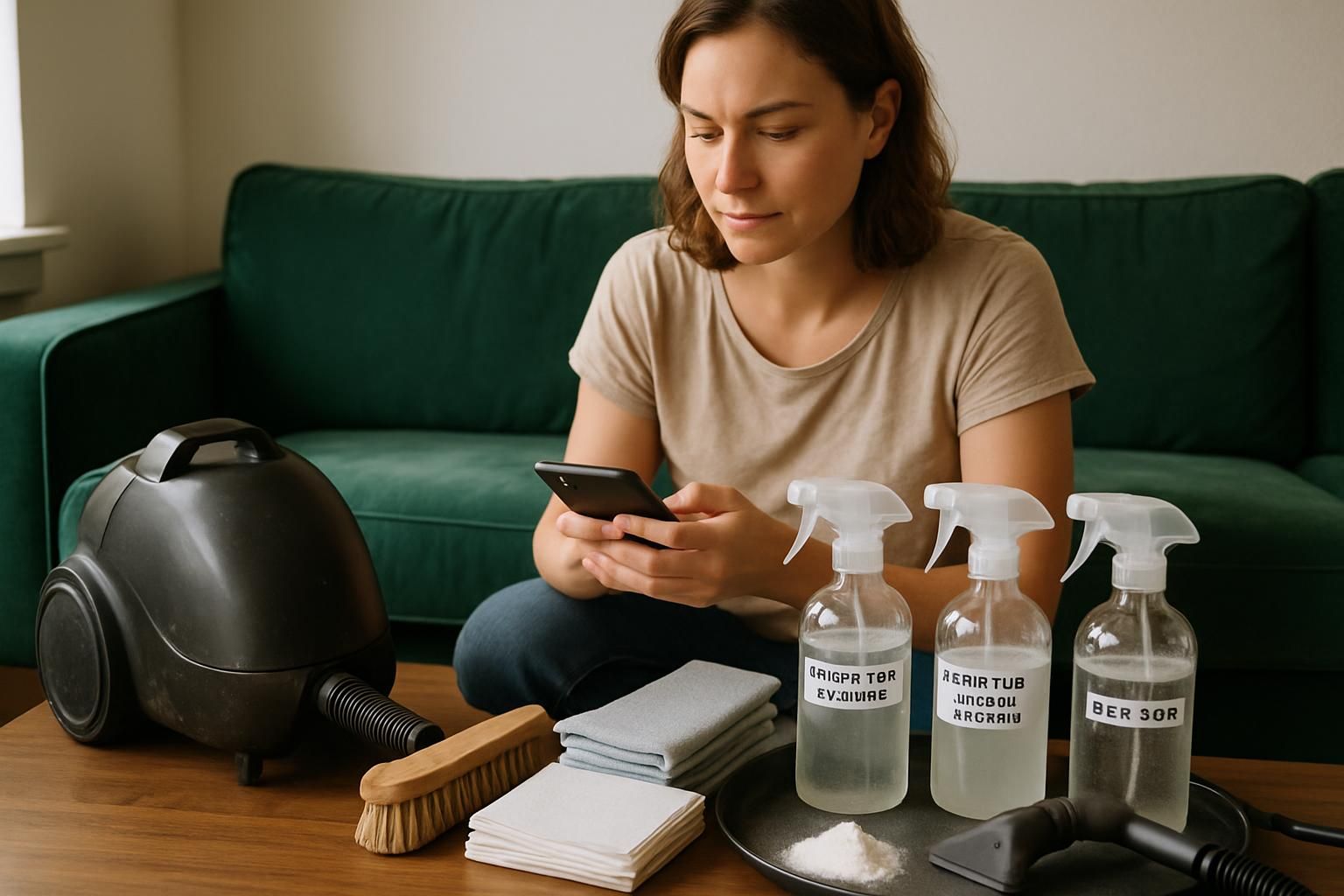
A soft bristle brush loosens surface dust before deeper cleaning. A vacuum with a soft brush attachment collects crumbs and grit without scuffing the fibers.
Keep microfiber cloths for blotting stains, plus paper towels for soaking up fresh spills from kids or pets. For cotton or polyester velvet, a gentle upholstery cleaner, like Woolite, can help with spot cleaning.
Distilled white vinegar mixed with water lifts many stains without leaving mineral rings. Baking soda helps with stain removal and odor control. For sticky spots, a little dish soap solution works, then blot dry with a clean towel.
Steam can refresh crushed fibers. Use a garment steamer or an iron set to steam while holding it above the fabric, never touching the couch.
Avoid bleach and harsh chemicals, they weaken fibers and cause discoloration. Dr. Sofa’s specialized kits offer a simple maintenance option for those who prefer ready-made solutions.
Test cleaning solutions on an inconspicuous area
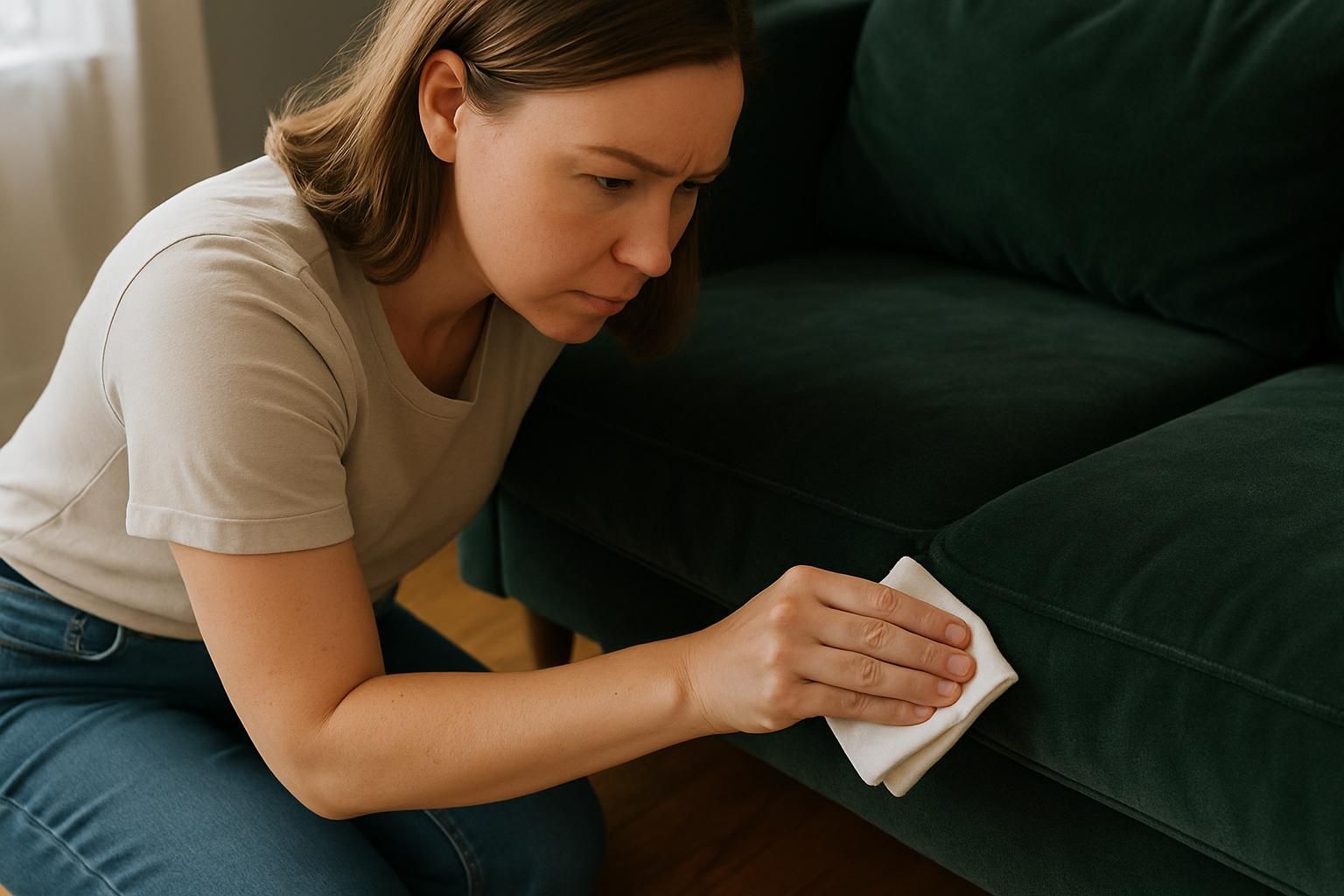
Choose a hidden spot, like under a cushion or behind the arm. Dab on a tiny amount of cleaner with a cotton swab or cloth. Wait at least 30 minutes and check for color change, fading, rough texture, or water rings. If it looks good, continue.
Different velvets react differently. Synthetic velvet usually shrugs off spills better than cotton. Cotton velvet needs less moisture, since water can leave marks or flatten fibers.
Some fabric blends need professional care. If the tag lists acetate, silk, or rayon, plan on expert cleaning. Also check the care label for codes, W means water based, S means solvent only, WS means either, and X means vacuum only.
Extra Tip: Identify your velvet type by reviewing its care label. This step clarifies which cleaning method is best for fabric maintenance and enhances household cleaning practices.
Regular Maintenance Tips
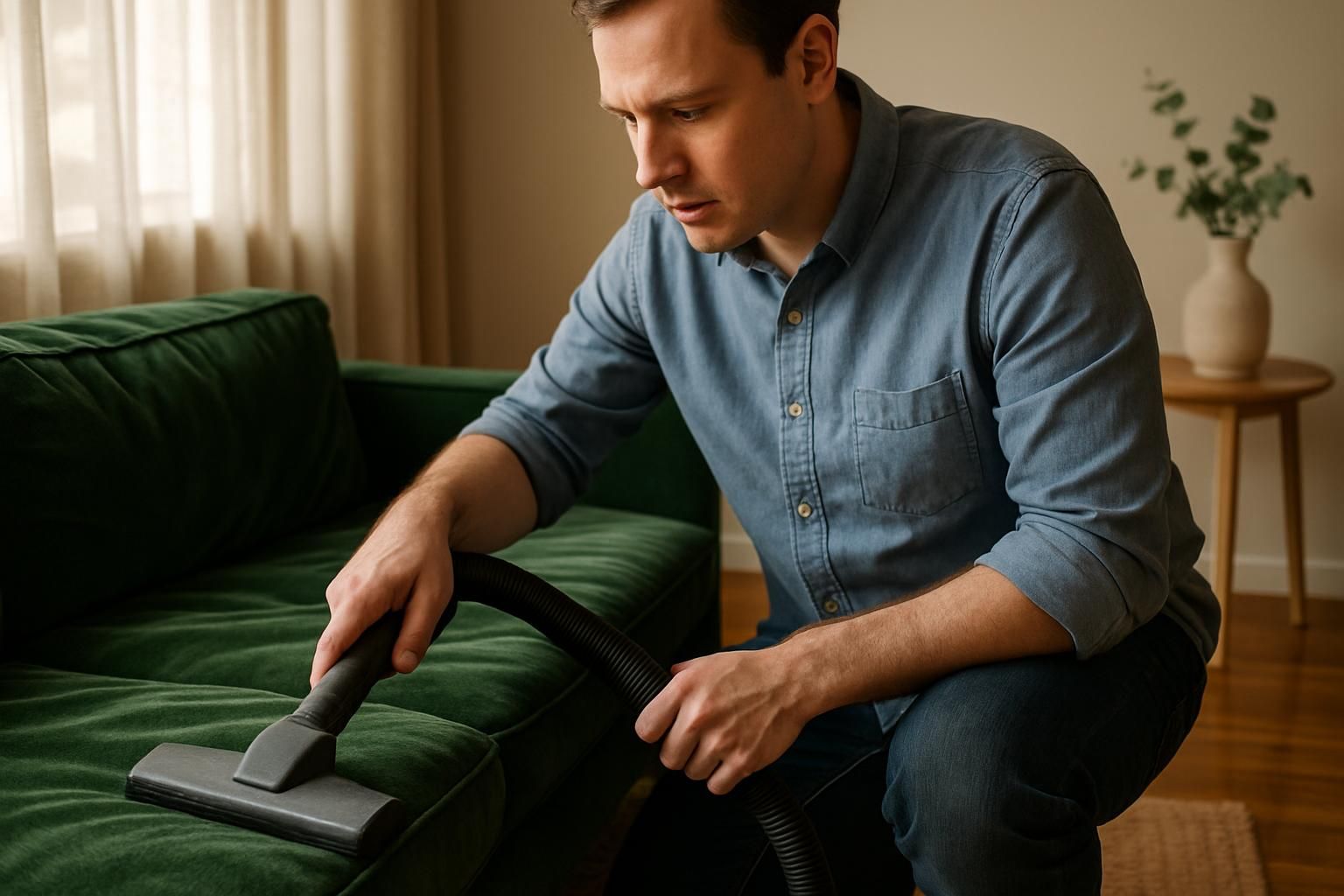
Regular upkeep keeps velvet looking calm and polished, like a well-brushed sweater. A few minutes each week beats fixing major stains later.
Quick weekly care also counts as simple household cleaning. It controls dust before it settles deep.
Additional Maintenance Insight: Regular upkeep, such as gentle brushing in the direction of the nap and using a mild cleaning solution, supports proper fabric maintenance. Routine checks for loose fibers help preserve the texture and look of your velvet couch.
Vacuum with a soft brush attachment
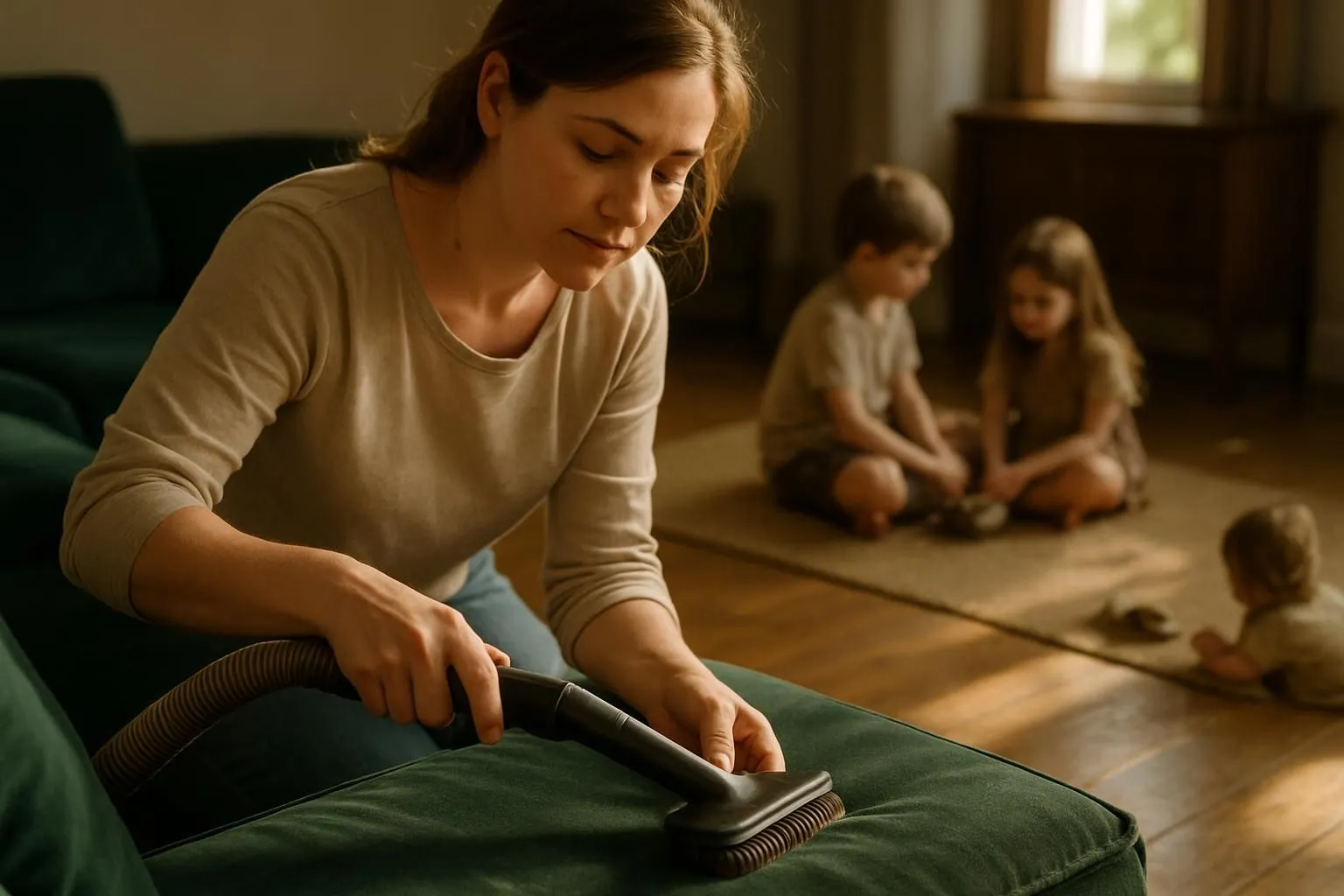
Use the soft brush tool to lift dirt from the surface without scratching. Run the vacuum in the same direction as the pile to protect the texture.
Allergens and crumbs disappear fast with this routine. Make slow, steady passes so the tool can grab fine debris. After any spot cleaning, a light pass can fluff matted areas.
Do not overdo it though. Too much vacuuming can wear down the fibers over time.
Brush in the direction of the nap
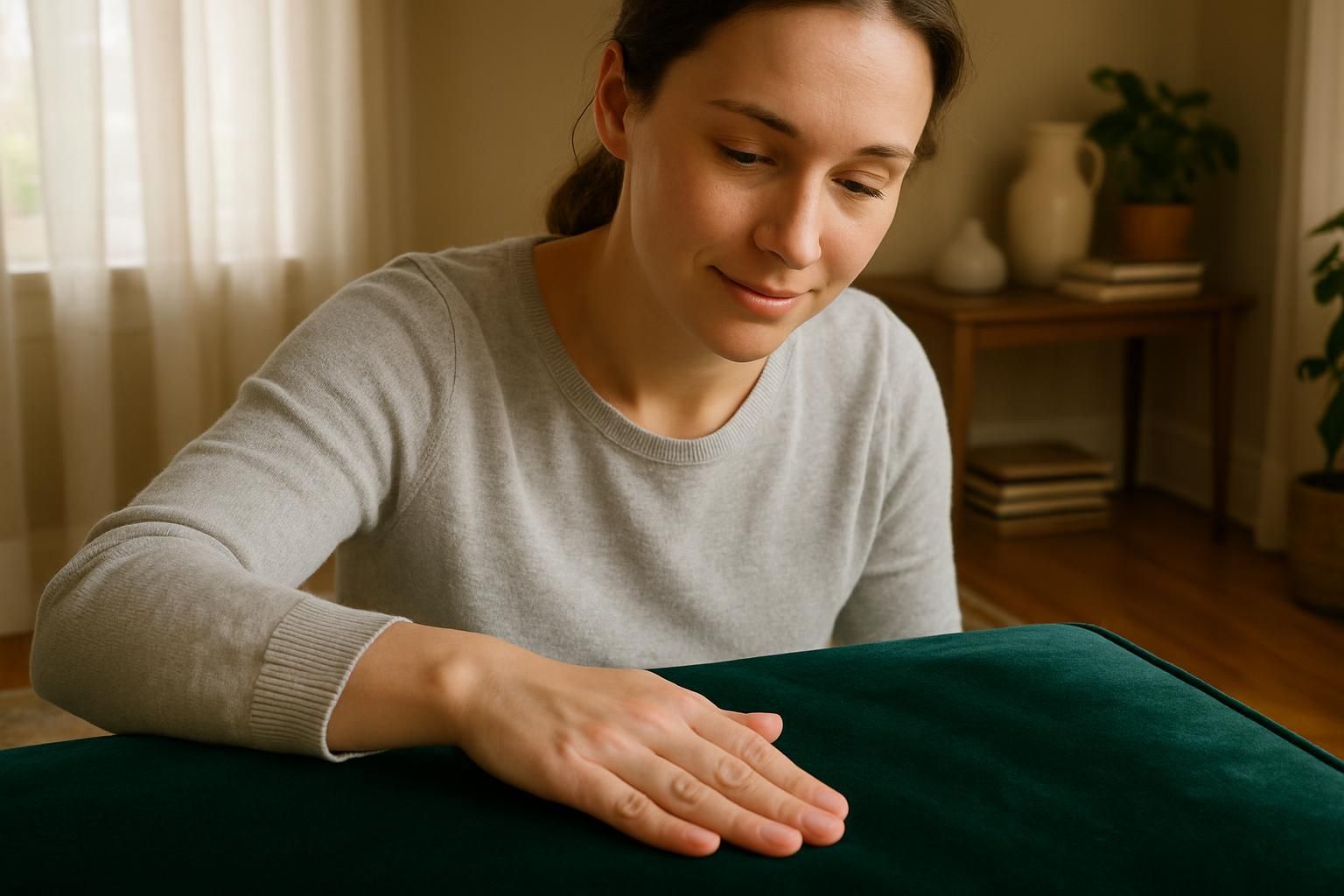
Use a soft upholstery brush and move with the nap, the direction the fibers naturally lie. Brushing this way keeps velvet plush and helps prevent matting.
After any light misting or cleaning, brush again to even out the look. Kids can leave seat imprints after movie night. A few gentle passes bring the pile back up.
For flat or creased areas, steam first from a safe distance, then brush with short, light strokes. Regular brushing keeps the fabric soft while shaking off dust before it sinks in.
Spot Cleaning Stains
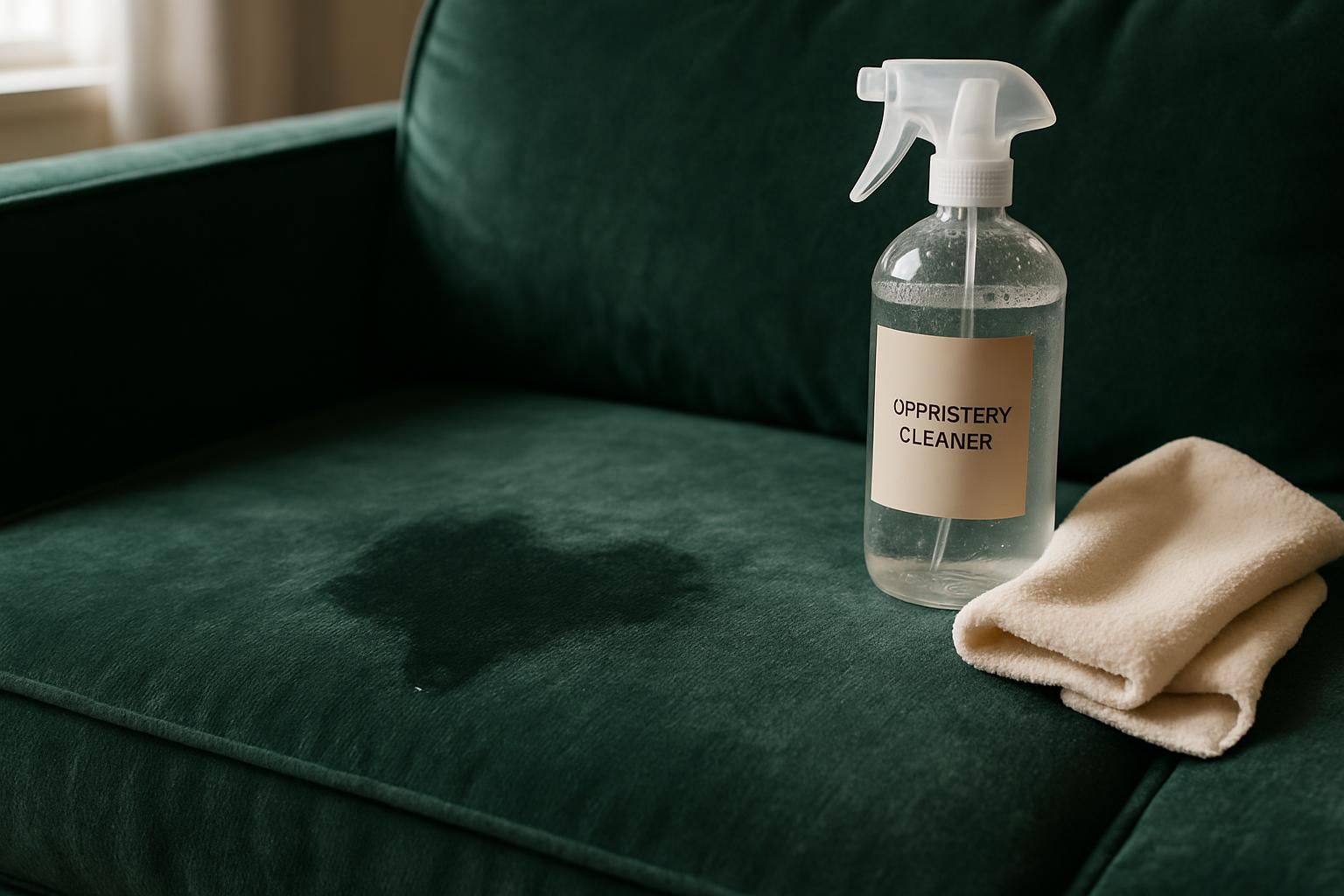
Spills happen fast. With the right steps, velvet bounces back and the stain goes away.
Evaluating your results after each cleaning step helps fine-tune the approach for effective stain removal.
Act quickly to address spills
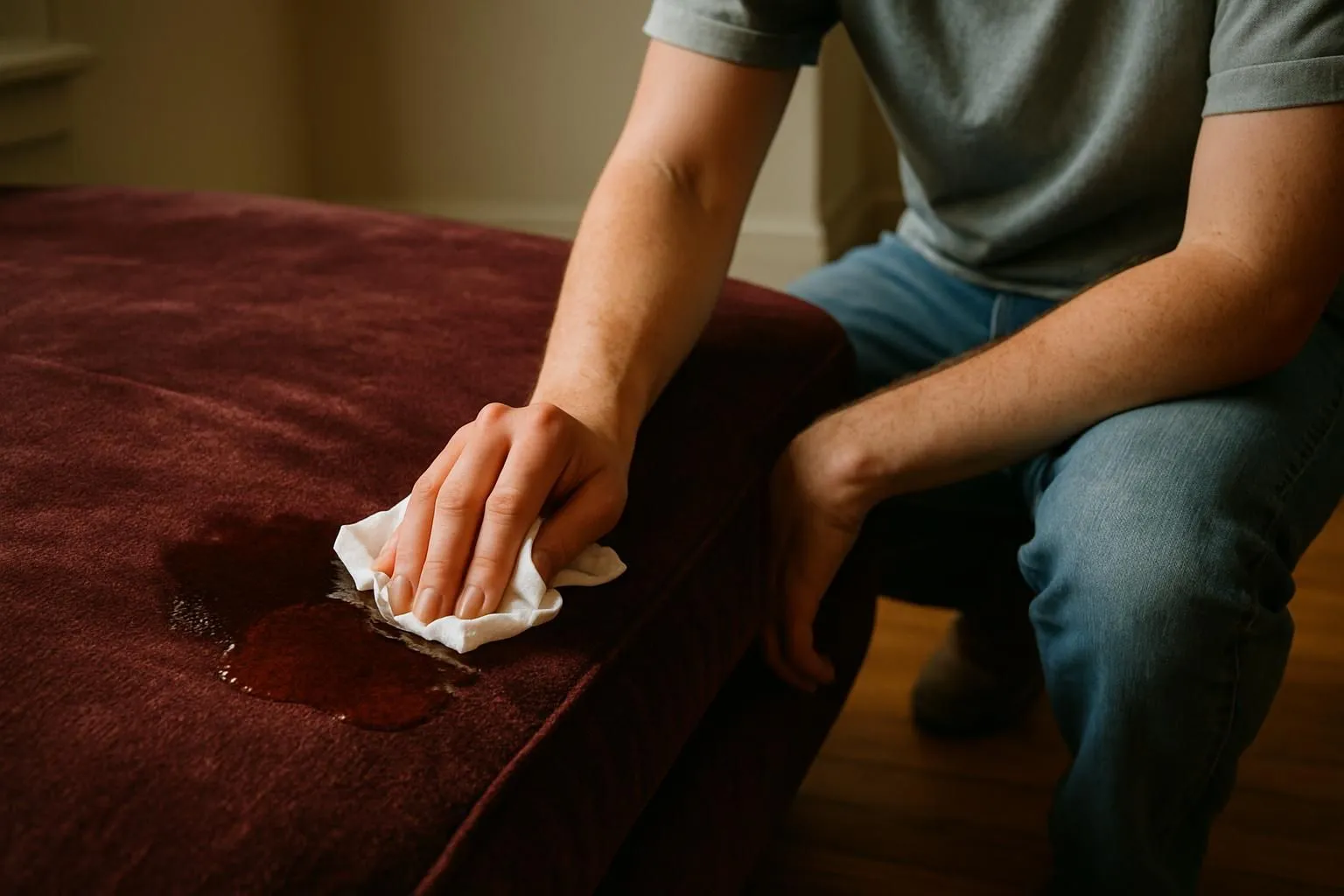
Speed matters. Blot the area with a clean paper towel or microfiber cloth. Do not rub, since that drives liquid deeper and spreads the stain.
For tougher marks, use a mild upholstery detergent on a damp sponge, then blot dry. If the stain sets or covers a large area, consider professional steam cleaning, such as Dr. Sofa’s services. A careful assessment after blotting ensures the best outcome.
Use a blotting technique instead of rubbing
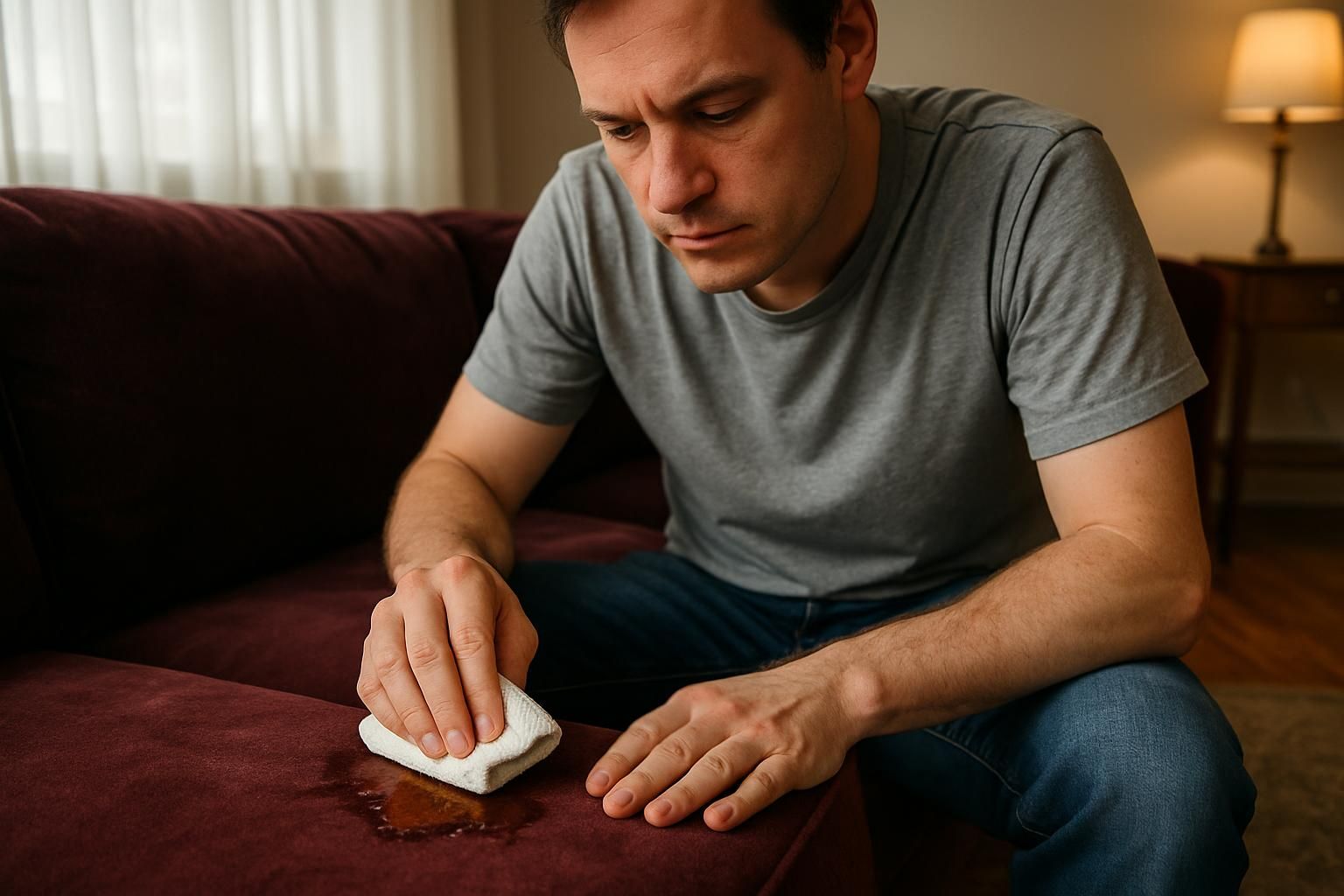
Start at the outer edge and blot toward the center with a microfiber cloth. This keeps the stain from spreading and protects the pile.
Rubbing feels natural in the moment, but it damages fibers and pushes moisture deeper. After any cleaner touches the fabric, blot again with a dry towel to pull up leftover liquid.
Prepare a mild cleaning solution
Mix equal parts distilled water and white vinegar for a gentle cleaner. Apply with a slightly damp microfiber cloth, not soaking wet. For fresh spills, combine two cups of distilled water with one teaspoon of dish soap.
Use store-bought upholstery cleaner only on cotton or polyester velvet. Avoid bleach and strong solvents, which can discolor velvet quickly. Always test your mix on a hidden spot first to avoid surprises.
Blot and rinse the stained area
After applying the cleaner, blot from the outside of the stain inward. Use only enough moisture to lift the mark. Too much liquid can leave water rings.
Next, dab with a clean cloth dampened with plain distilled water to remove residue. Press with a dry towel to pull up remaining moisture. For bigger spills, set up a fan nearby to speed drying. Repeat if needed, testing between passes to keep colors true.
Dealing With Odors
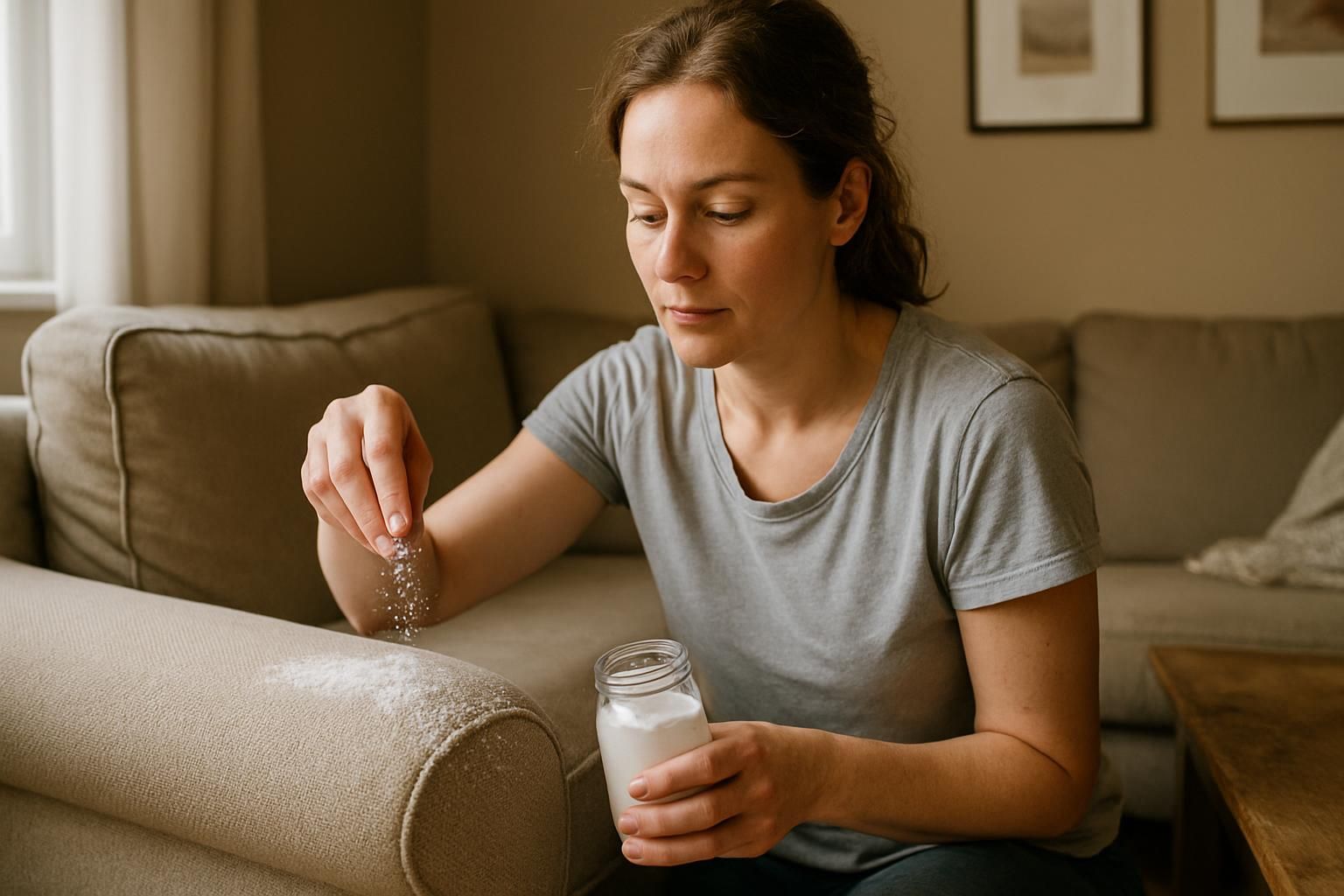
Baking soda is simple and effective, like opening a window for the fabric.
Sprinkle baking soda and vacuum after letting it sit
Shake a generous layer of baking soda across the couch. Let it sit for several hours, or overnight for strong odors from pets or spills. Baking soda absorbs smells without adding fragrance or harsh chemicals.
Vacuum thoroughly with the upholstery brush to remove all powder. A slow pass pulls out trapped odors and leftover particles. Skip heavy perfumes or strong sprays, which can cling to the pile and mask issues instead of fixing them.
Final Touches
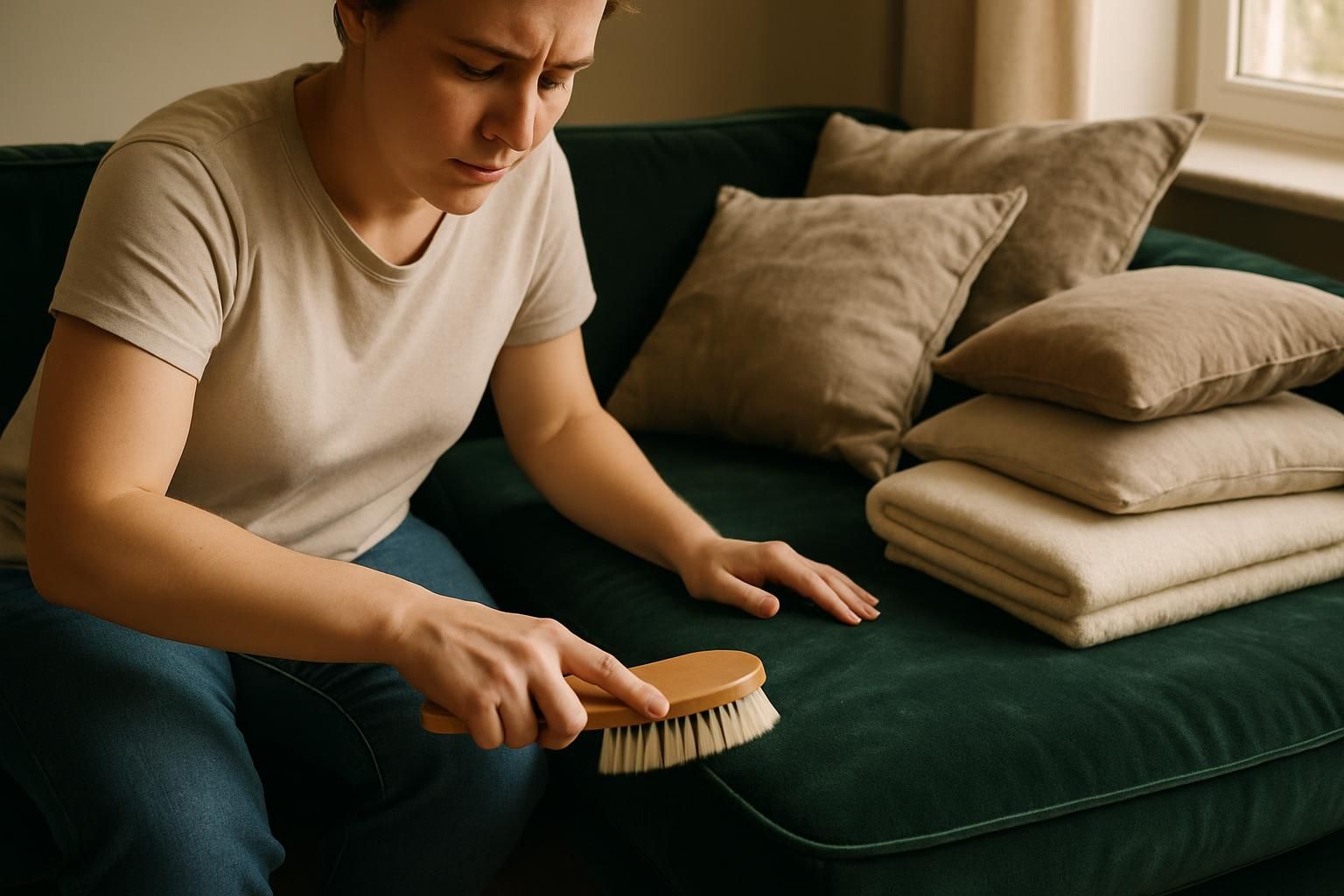
Finish strong. Let the fabric dry fully, then give the pile a quick reset.
Let the couch air dry completely
After cleaning, keep cushions off and avoid sitting until the couch is fully dry. Moisture left in thick pile can invite mildew and musty odors.
Open windows or run a fan to move air. Skip direct heat from hair dryers or space heaters, high heat can distort fibers and cause water marks. Families with little ones should treat the sofa like fresh paint, hands off until dry.
Once dry, a brief steam can relax any compression marks. Then brush to restore the smooth, even look.
Brush the velvet to restore its texture
When the fabric is dry, glide a soft brush with the nap to lift flattened spots. Light, even strokes bring back the plush feel.
If needed, use gentle steam from a few inches away to loosen stubborn dents. Follow with a vacuum using the soft brush tool to remove lint and fluff the pile. Simple tools, steady strokes, great results.
Conclusion
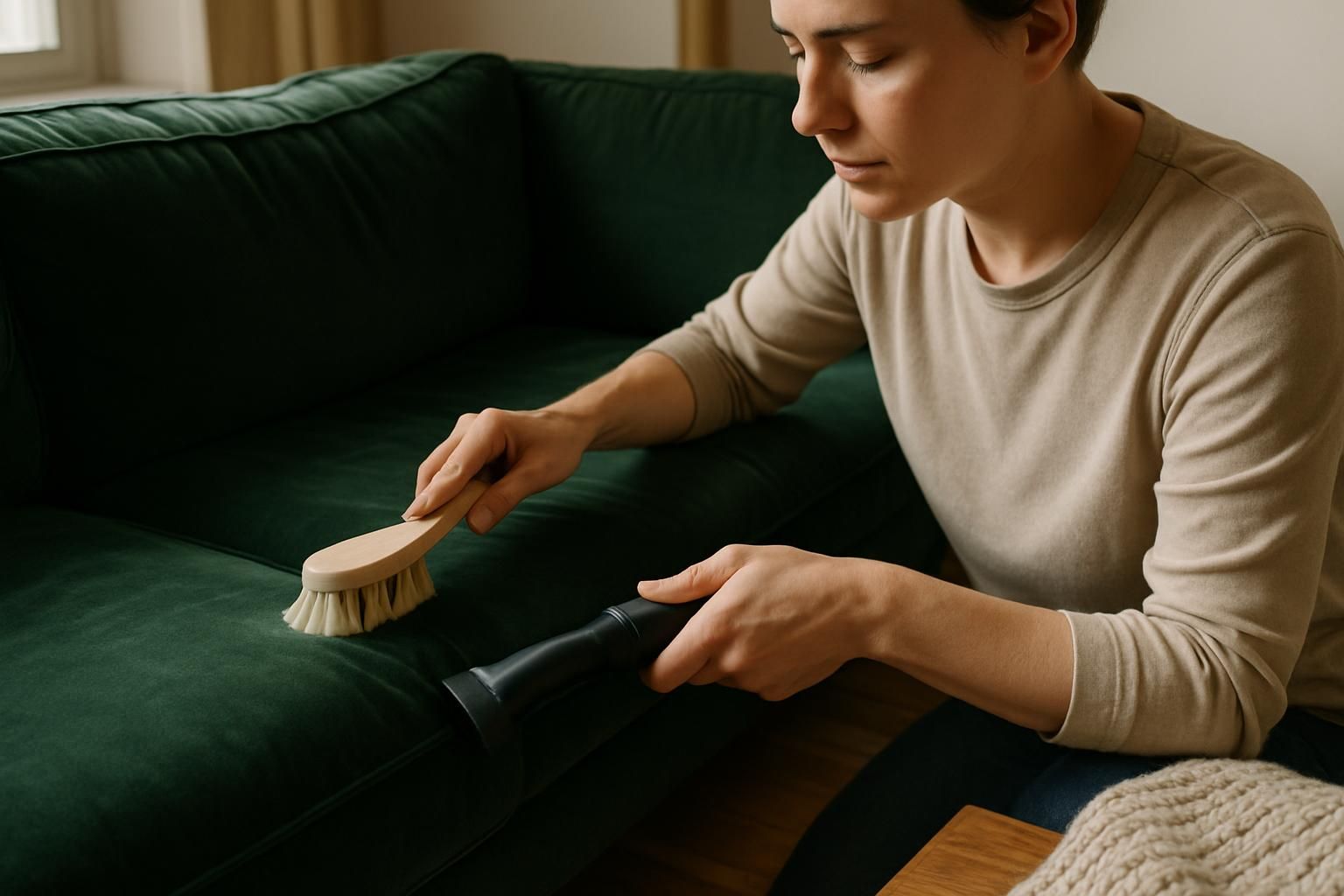
Velvet has serious style, and with smart upholstery care it stays that way. Regular vacuuming and light brushing protect the pile. Quick stain removal with vinegar or a mild soap mix keeps marks from setting.
Spot clean with a microfiber cloth, then air dry fully before anyone sits. For odor control, use baking soda and a slow vacuum pass. If deep stains linger or the fabric label lists S or X only, call a pro.
Use these cleaning techniques to keep velvet fabric looking plush and inviting. That is How To Clean A Velvet Couch without losing the soft, cozy feel everyone loves.
These instructions highlight effective fabric maintenance practices that support home decor and household cleaning. Adopting these methods can help protect your investment in quality upholstery.
FAQs
1. How do I clean a velvet couch without ruining the fabric?
Vacuum first to grab dust and crumbs. Use a soft brush or cloth for gentle strokes. Mix mild soap with water, then dab stains lightly; never soak the seat. Let it air dry away from direct heat.
2. Can I use regular cleaners on my velvet sofa?
Skip harsh sprays and bleach-based products since they can damage fibers fast. Stick to gentle upholstery cleaners or homemade solutions like diluted dish soap.
3. What should I do if someone spills wine on my velvet couch?
Act quickly; blot the spill with a dry towel, pressing instead of rubbing so you don’t push liquid deeper into the pile. Afterward, use a damp cloth with mild soap to treat any leftover stain.
4. How often should I deep clean my velvet couch?
Deep cleaning every six months keeps your settee looking fresh and plushy as ever. Spot-clean messes right away for best results, but save full washes for when dirt starts showing up in daylight or after big gatherings at home.



